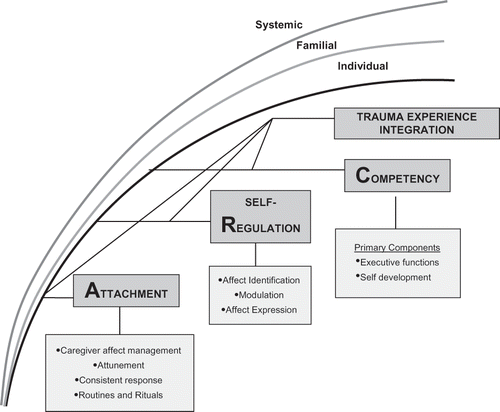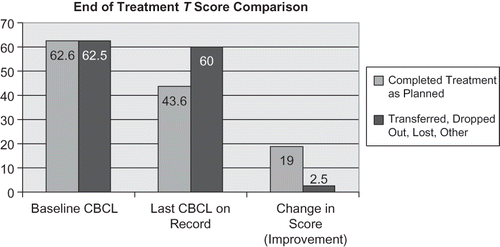Figures & data
Figure 1. Attachment, self-regulation, and competency (ARC): A framework for intervention with complexly traumatized youth. Adapted from “Attachment, Self-Regulation, and Competency: A Comprehensive Framework for Intervention With Complexly Traumatized Youth. A Treatment Manual,” by K. CitationKinniburgh and M. Blaustein, 2005, p. 426. Copyright 2005 by authors. Reprinted with permission.

Table 1 Types of trauma experienced (N = 93)
Table 2 Affect modulation exercises for children 3–5 years
Figure 2. Comparison of baseline and discharge Child Behavior Checklist (CBCL) scores. Adapted from “Alaska Child Trauma Center Summary Report,” J. CitationAtkinson and R. Lamar, 2009, p. 10. Copyright 2009 by University of Alaska Anchorage. Reprinted with permission.

Figure 3. Child Behavior Checklist (CBCL) overall t-score comparison. Adapted from “Alaska Child Trauma Center Summary Report,” J. CitationAtkinson and R. Lamar, 2009, p. 16. Copyright 2009 by University of Alaska Anchorage. Reprinted with permission.
